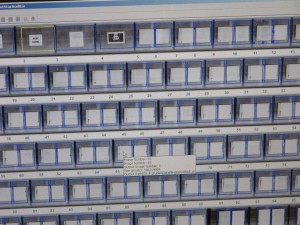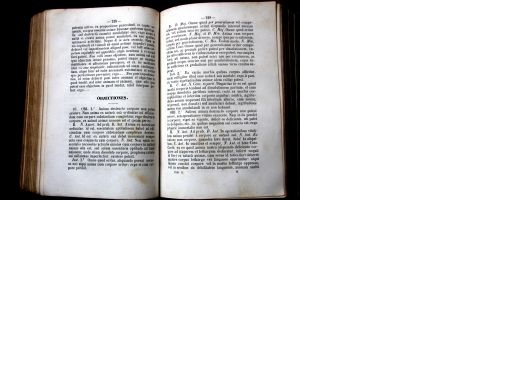November 27, 2017
Your One-Stop Microfiche Scanning Services Solution
High Quality Microfiche Scanning Services
Generation Imaging is a microfiche scanning company located in South Florida. It has serviced hundreds of clients, including imaging resellers, financial institutions, schools, insurance companies, colleges, engineers, homeowners associations, government agencies, researchers, military veterans, libraries, and many others.
Does Your Microfiche Reader Need Repair?
As we march on into the 21st century, there are still remnants of an analog tech industry: you, your institution or your office may still be using microfiche on a daily basis, for an occasional request, or just as an archive. Part of the archaic method is to use a reader printer to read or print individual images.
That process can best be described as a band-aid and the general mentality is that it’s less expensive compared to digitizing the entire microfiche collection. However, a true cost benefit analysis must be considered before disregarding a microfiche conversion possibility.
Those microfiche readers were not built to last, and more and more users are reporting a lack of technical support, a need for spare parts, upgrades, or replacements. All of these searches may come up short in today’s economic times and advanced technological leaps.
What is Microfiche Scanning?
Microfiche scanning is the act of converting microfiche to digital images. Your entire fiche card or collection can be transferred to an output media such as CD, DVD, or external hard drive, or uploaded to a server, PCs, or internet. The benefits of converting an analogue media to digital media are numerous.
The resulting images can be in any image format; some common ones are TIFF, PDF, or JPEG. The frames of a microfiche may be outputted as individual files (called “single page”) or wrapped up into one file containing a fiche or name (called “multi-page”).
Microfiche Scanner Price vs Microfiche Scanning Price
Microfiche scanning is a specialized skill, and requires the correct equipment, experienced management, trained employees, a rigid set of procedures, the proper network configuration, parts and maintenance, insurance, office space, and many other factors. Microfiche scanning is a niche industry and although it is logical to presume that it would be cheaper to buy a microfiche scanner than to subcontract scanning services, that is actually not true in most cases.
A new high-quality, high-production microfiche scanner can run around $55,000 each depending on the make and model. Consider a mandatory maintenance plan and labor as well. A used microfiche scanner is slightly cheaper, of course, but understand that most are sold “as is” with no warranty or guarantees after a 30-day period (if that).
Generation Imaging offers very low microfiche scanning prices. Depending on how many microfiche cards in your collection it could a small flat rate fee for a small project or a tiny charge per image on large volume microfiche projects. Generation Imaging provides professional experience: microfiche scanning is both an art and science, and G.I. Partners has the high-end equipment, expert employees, and workflow procedure all ready right now.
The Benefits of Microfiche Scanning Conversion
Subcontracting the microfiche conversion to Generation Imaging is a relatively quick and painless process. Here are some benefits.
Microfiche to digital image saves space.
Microfiche scanning saves the time and labor of searching through file cabinets or using reader printers.
A microfiche conversion will save money for you in the long run.
Having a digital copy allows unlimited duplication, copying, emailing, uploading, and sharing.
With a microfiche’s images in your possession, you know have two copies: an analog and a digital; you can use the originals as an emergency backup if you wish.
The Different Types of Microfiche
The term microfiche can apply to various types of media. The basic characteristic that links microfiche is that they contain frames on a flat plastic sheet (as opposed to a spool of film, color slide, paper document, or cut-out cardboard aperture card). Here is a brief description of the different types of microfiche:
16mm jackets: These were originally contained on roll film strips and have been cut down and inserted into open jacket sleeves. May contain anywhere from 1 to 90 frames, although there are always exceptions to any rule regarding generalizing microfiche properties.
16mm duplicate jackets: These no longer contain the open sleeves; copies of jackets. May be black, blue, purple, or other colors depending on the duplication process.
35mm jackets: Usually very large frames (like blueprints or drawings), containing around 1-6 frames.
35mm duplicate jackets: A copy of a jacket with no open sleeves.
COM fiche: Computer generated microfiche, theoretically with perfectly aligned rows and columns. Usually packed with 208-270 images, unless some columns are not full.
Duplicated COM fiche: Same as COM fiche, but usually blue, purple, or another color. One issue that may arise is that the duplication method was wrong, so the COM fiche becomes skewed (crooked) or out of focus (rare).
Rewritable microfiche: Sometimes referred to as AB Dick or Microx, these are generally very light, and may look like duped jackets, but are evenly spaced, and contain “blank” frames.
Step and repeat microfiche: “Step-and-repeat” fiche were created with a special camera (also called 105mm film). They are more straight and even than jacket fiche, but have a varied image count, usually 60-300 images. They mostly contain manuals from Yahama, Suzuki, Ford, GM, Harley, Kawasaki, lab notebooks, books, etc.
Ultrafiche: These are like “super COM fiche” or “giant step-and-repeat” microfiche. There may be up to 500 very tiny frames on ultrafiche.
How To Start Your Microfiche Conversion
Please contact a representative from Generation Imaging today for a free, no-obligation microfiche scanning price quote.



